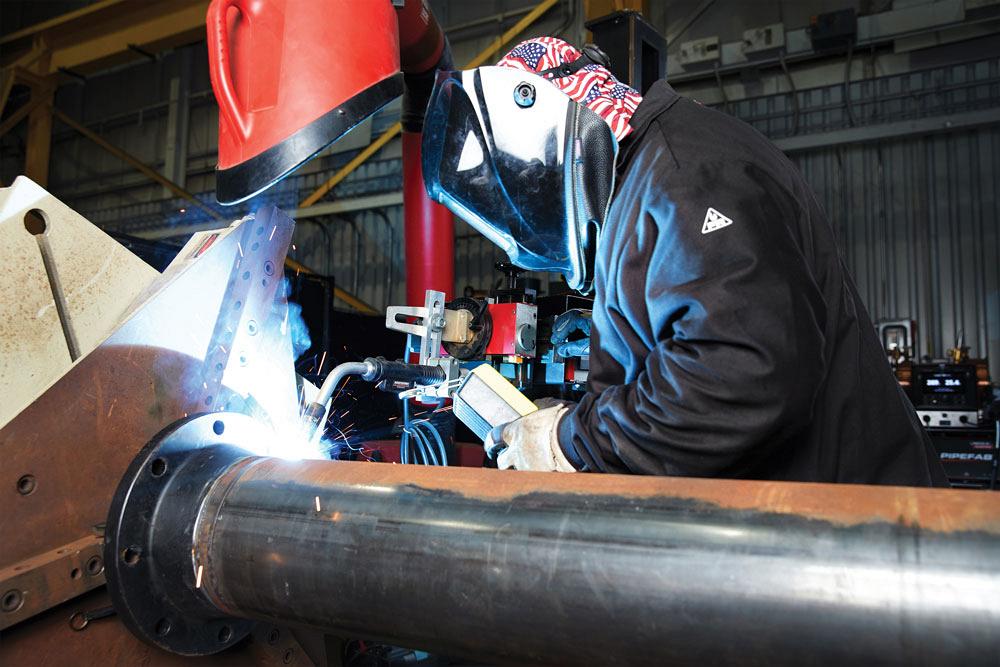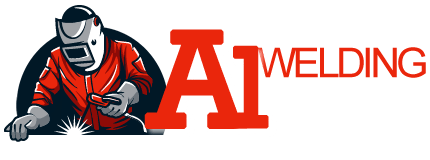
Commercial pipe welding involves joining metal pipes in various industrial and commercial settings, such as construction sites, manufacturing plants, refineries, and power plants. Here’s a detailed overview:
Overview of Commercial Pipe Welding
1. Types of Welding Processes
a. Shielded Metal Arc Welding (SMAW): Also known as stick welding, this is common for its simplicity and versatility. Suitable for welding in various positions and environments.
b. Gas Tungsten Arc Welding (GTAW/TIG): Provides high-quality welds with precision, typically used for critical applications requiring clean and controlled welds.
c. Gas Metal Arc Welding (GMAW/MIG): Fast and efficient, ideal for high-volume production. Uses a continuous wire feed as an electrode and shielding gas.
d. Flux-Cored Arc Welding (FCAW): Similar to MIG welding but uses a tubular wire filled with flux. Suitable for outdoor welding and high-speed applications.
e. Submerged Arc Welding (SAW): Utilizes a granular flux to shield the weld, producing high-quality welds with deep penetration. Often used for large diameter pipes and heavy materials.
2. Materials
a. Carbon Steel: Widely used for its strength and versatility. Common in industrial and structural applications.
b. Stainless Steel: Resists corrosion and is used in environments requiring hygiene, such as food processing or pharmaceuticals.
c. Alloy Steels: Offer specific properties for high-strength and high-temperature applications.
d. Aluminum and Non-Ferrous Metals: Used for applications where weight and corrosion resistance are critical.
3. Applications
a. Construction: Piping systems for water, gas, and HVAC in buildings and infrastructure projects.
b. Oil & Gas: Pipelines and processing facilities for transportation and refining.
c. Power Plants: Boilers, reactors, and piping systems in nuclear, thermal, and hydroelectric plants.
d. Manufacturing: Piping for machinery, chemical processing, and material transport systems.
4. Key Skills and Techniques
a. Blueprint Reading: Understanding technical drawings to determine pipe dimensions, routes, and welding specifications.
b. Fit-Up and Alignment: Ensuring pipes are properly aligned and fitted before welding to prevent defects and ensure integrity.
c. Weld Inspection: Using visual and non-destructive testing (NDT) methods to assess weld quality, such as X-ray, ultrasonic, and magnetic particle testing.
d. Safety Practices: Adhering to safety standards to prevent accidents and ensure safe operation, including proper use of PPE, ventilation, and handling of welding equipment.
5. Challenges and Solutions
**a. Heat Distortion: Controlling heat input to minimize warping and distortion of pipes.
**b. Corrosion Resistance: Selecting appropriate materials and coatings to prevent corrosion in harsh environments.
**c. Accessibility: Tackling welding in confined or difficult-to-reach areas through specialized techniques and equipment.
**d. Quality Control: Maintaining high standards through rigorous testing and adherence to welding codes and standards like ASME, API, and AWS.
6. Certifications and Standards
a. American Welding Society (AWS): Certifications for various welding processes and positions.
b. American Society of Mechanical Engineers (ASME): Standards for welding in pressure vessels and piping.
c. American Petroleum Institute (API): Standards for welding in the oil and gas industry.
d. Occupational Safety and Health Administration (OSHA): Guidelines for safety practices in welding.
7. Emerging Trends
**a. Automation and Robotics: Increasing use of automated welding systems for precision and efficiency.
**b. Advanced Materials: Development of new alloys and materials that require specialized welding techniques.
**c. Sustainable Practices: Adoption of environmentally friendly practices and materials in welding processes.
**d. Digital Integration: Use of digital tools for design, simulation, and quality control in welding projects.
8. Tools and Equipment
- Welding Machines: MIG, TIG, Stick welders.
- Cutting Tools: Plasma cutters, oxy-fuel torches.
- Filler Materials: Wires, rods for specific metals.
- Personal Protective Equipment (PPE): Helmets, gloves, aprons.
Safety and Best Practices
- Proper Training: Ensure welders are trained and certified.
- Ventilation: Use exhaust systems to remove fumes.
- Equipment Maintenance: Regularly inspect and maintain welding equipment.
- Fire Safety: Have fire extinguishers and safety procedures in place.
By understanding these aspects, welders can achieve high-quality, durable, and safe welds in commercial applications.
